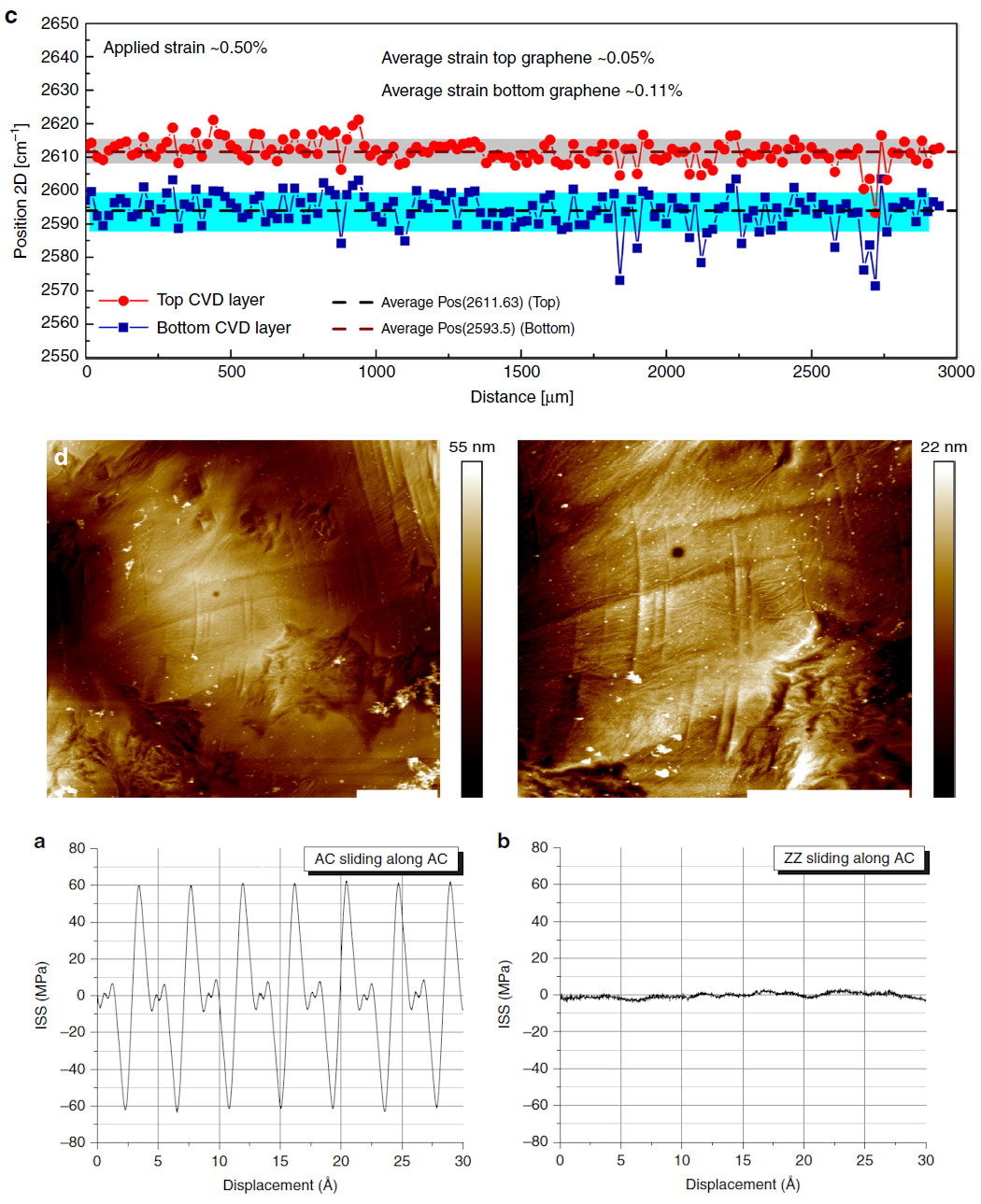ABSTRACT
Achieving structural superlubricity in graphitic samples of macroscale size is particularly challenging due to difficulties in sliding large contact areas of commensurate stacking domains. Here, we show the presence of macroscale structural superlubricity between two randomly stacked graphene layers produced by both mechanical exfoliation and chemical vapour deposition. By measuring the shifts of Raman peaks under strain we estimate the values of frictional interlayer shear stress (ILSS) in the superlubricity regime (mm scale) under ambient conditions. The random incommensurate stacking, the presence of wrinkles and the mismatch in the lattice constant between two graphene layers induced by the tensile strain differential are considered responsible for the facile shearing at the macroscale. Furthermore, molecular dynamic simulations show that the stick-slip behaviour does not hold for incommensurate chiral shearing directions for which the ILSS decreases substantially, supporting the experimental observations. Our results pave the way for overcoming several limitations in achieving macroscale superlubricity using graphene.


